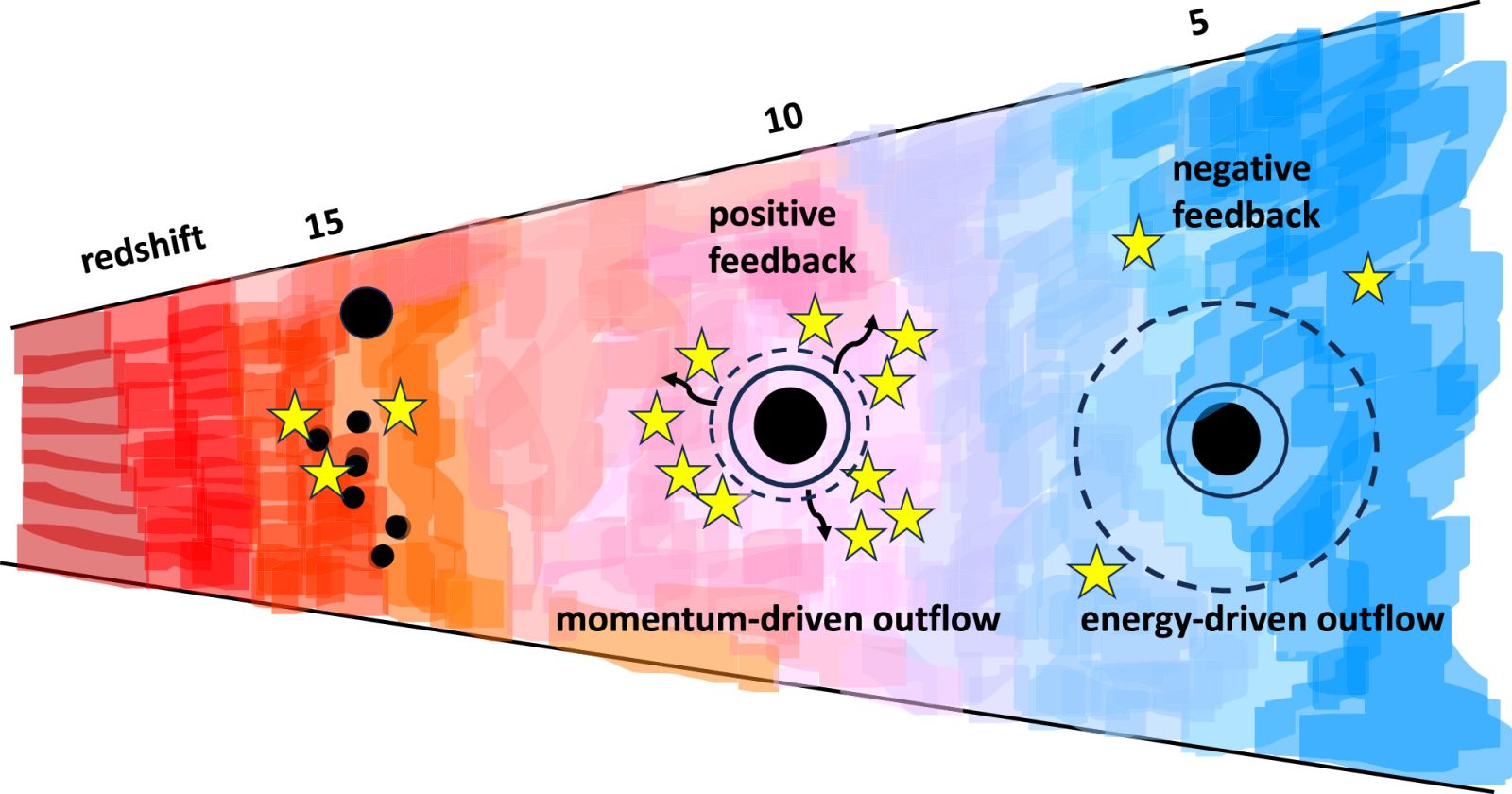Follow us on Google News (click on ☆)

The transition of star formation rates and black hole growth as redshift decreases, from regimes where positive feedback dominates to a later era where feedback is largely negative.
© Astrophysical Journal Letters
The findings challenge the classic understanding that black holes formed after the emergence of the first stars and galaxies. Instead, they may have significantly accelerated the birth of new stars in the Universe's first 50 million years, a brief period in its 13.8-billion-year history. Black holes could have acted as gigantic amplifiers of star formation.
Observed via the Webb Telescope, the distant galaxies from the Universe's early days appear much brighter than scientists had predicted, revealing an unusually high number of young stars and supermassive black holes. Black holes and galaxies coexisted and mutually influenced each other over the first 100 million years. If the Universe's history were a 12-month calendar, these years would represent the early days of January.
The outflows and jets from black holes crushed nearby gas clouds, transforming them into stars and significantly accelerating their formation rate. This missing link explains why these early observed galaxies are brighter than expected.
Reference:
Joseph Silk et al. 2024 ApJL 961 L39. https://doi.org/10.3847/2041-8213/ad1bf0